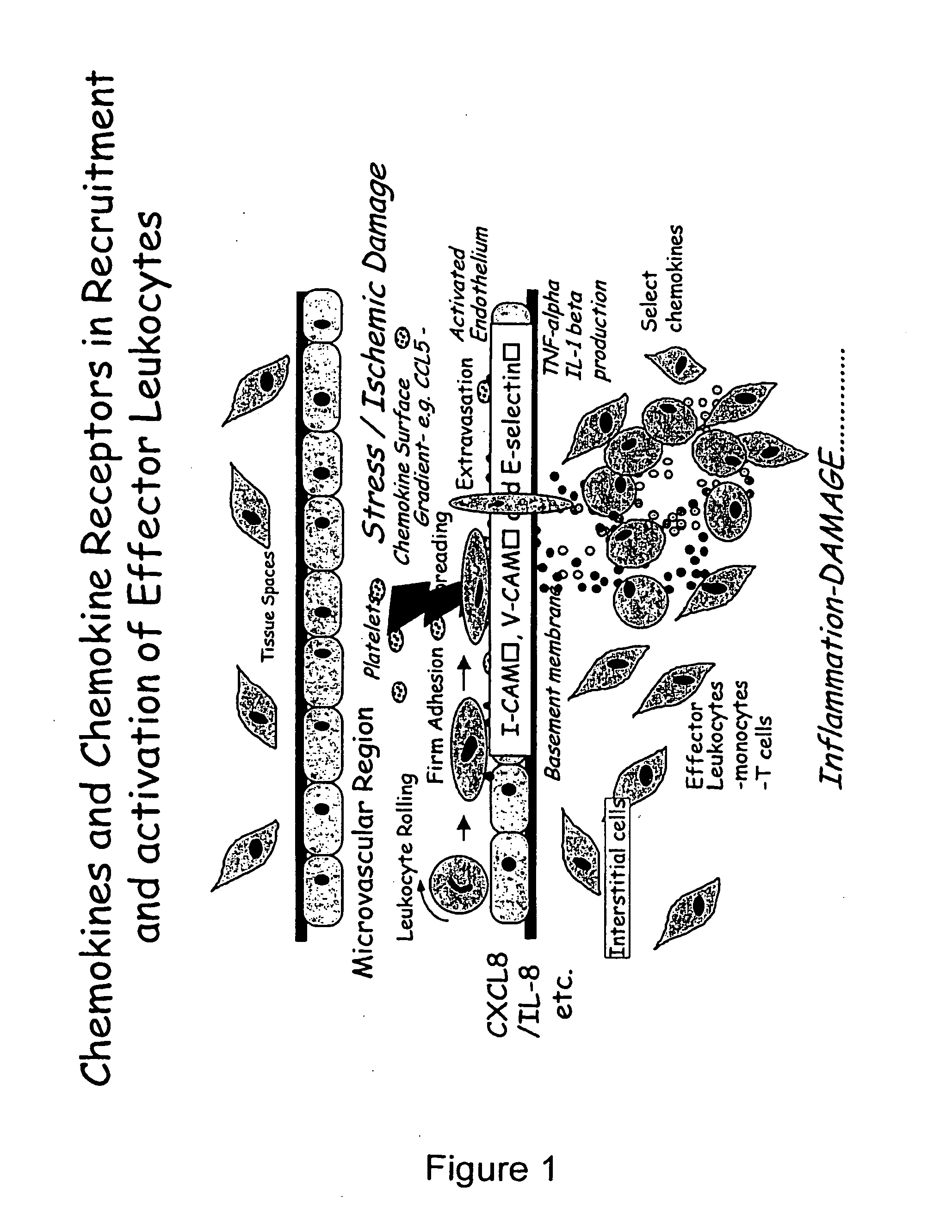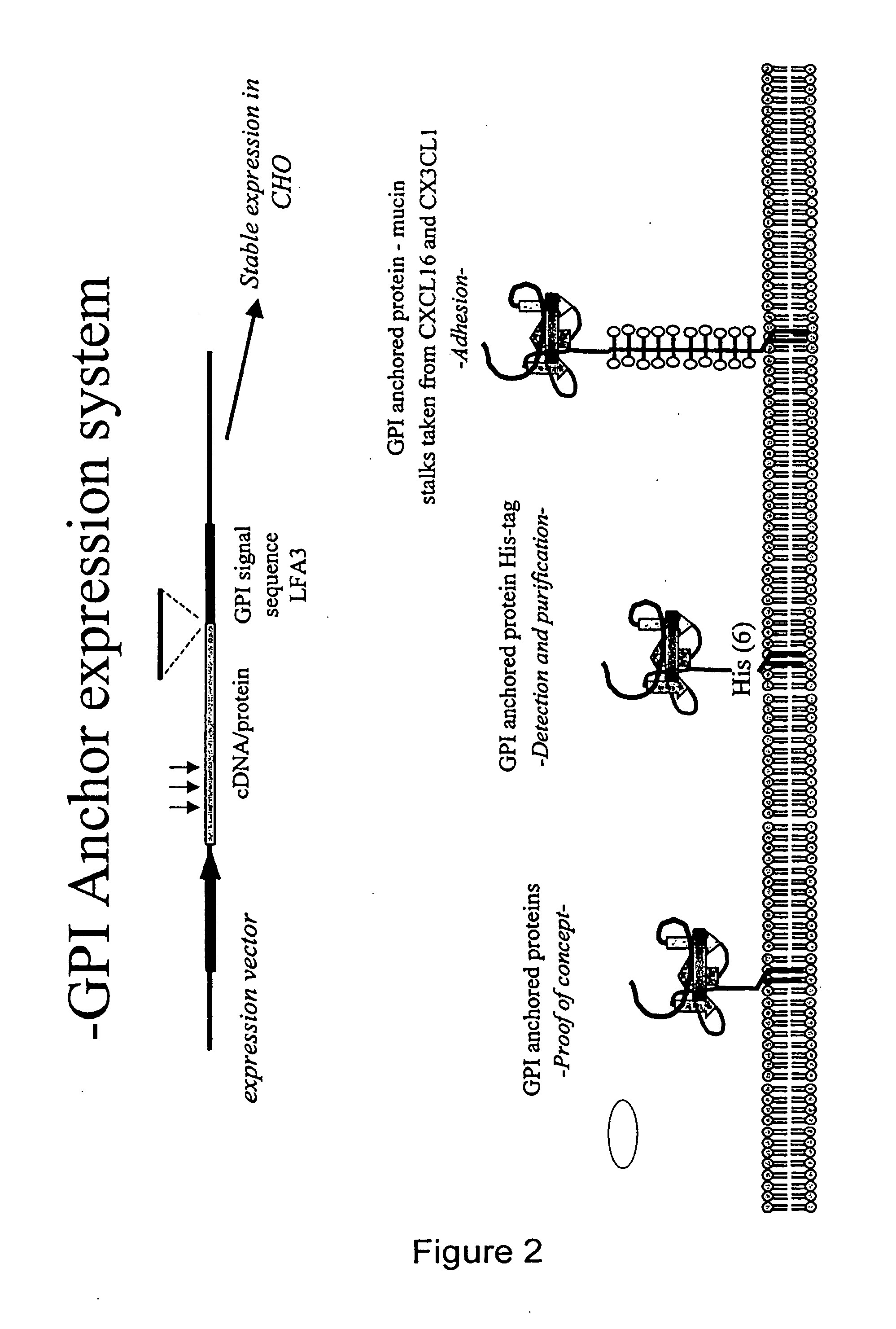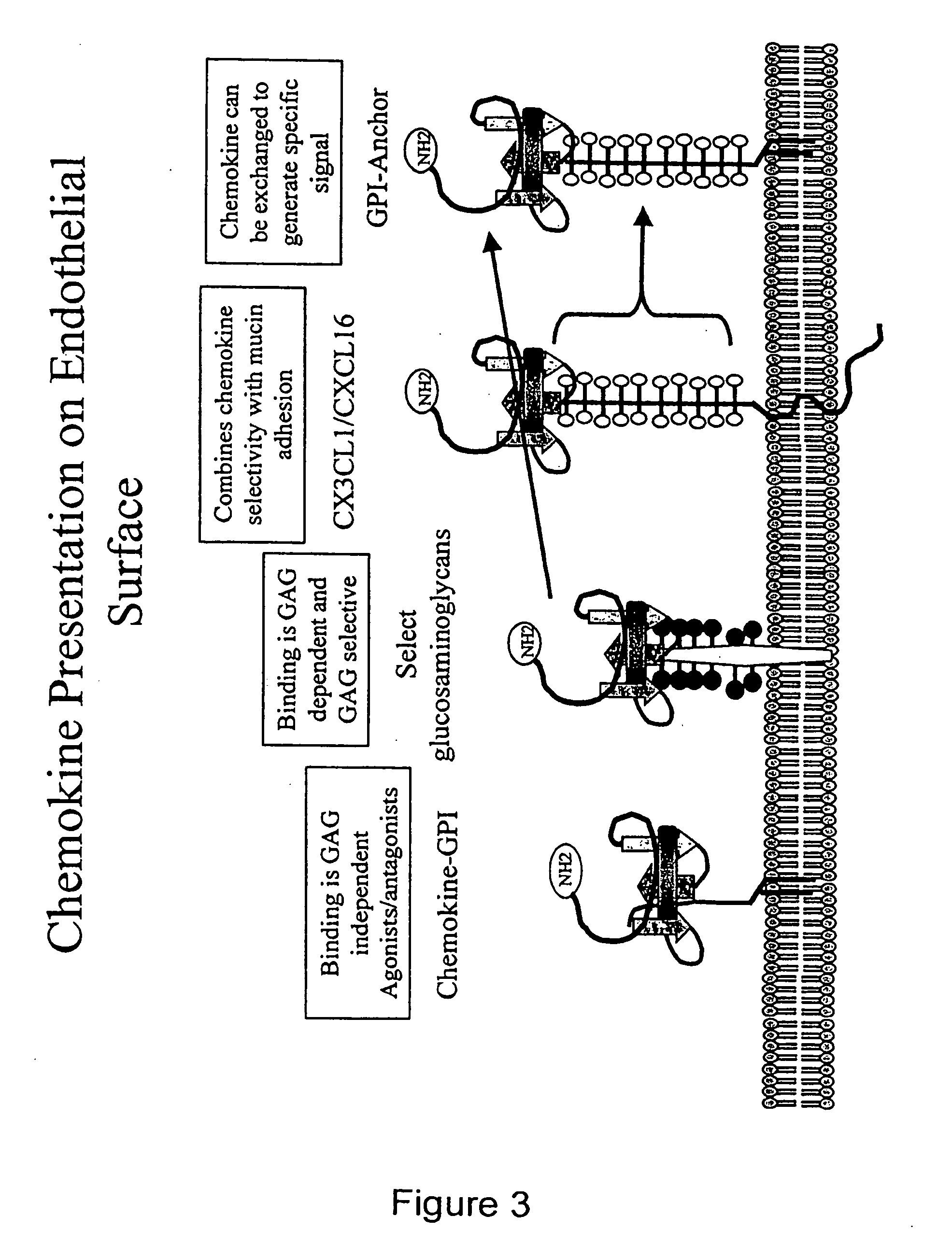Chemokine-Mucin Fusions Linked to Glycosylphosphatidylinositol (GPI)-Anchors in Tissue Regeneration and as Tumour Immune Adjuvants
a glycosylphosphatidylinositol and fusion technology, applied in the field of chemokinemucin fusions, can solve the problems of high circulating protein levels, unfavorable immune adjuvants, and failure of last line of defense against cancer, etc., and achieve the effect of reducing immune-induced vascular damag
- Summary
- Abstract
- Description
- Claims
- Application Information
AI Technical Summary
Benefits of technology
Problems solved by technology
Method used
Image
Examples
example 1
Construction and Purification of the CCL5-GPI Fusion Protein
[0106]Human CCL5 was cloned from cDNA (Schall et al., 1990) using hCCL5 specific primers and PCR. The CCL5 cDNA sequence (without a translation stop codon) was fused to a GPI signal sequence cloned from LFA-3 cDNA (Kirby et al., 1995).
[0107]Modifications were then introduced into the CCL5-GPI construct. A methionine residue was added to the amino terminal of the mature protein, just after the signal sequence. Met-CCL5-GPI was then combined with either the E66A or E26A mutation to generate non-aggregating, functional antagonists fused to a GPI anchor. The resulting constructs were then subcloned into the pEF-DHFR vector and stably introduced into CHO cells (Mack et al., 1995).
[0108]Surface human CCL5 antigen expression was determined using FACS analysis and the hCCL5 specific antibody VL3 (Nelson, 2000; von Luettichau et al., 1996; FIG. 8 A-D). VL3 was selected from a panel of previously characterized anti-CCL5 monoclonal an...
example 2
PLC Digestion Confirmed GPI Anchorage of CCL5
[0118]GPI anchorage of the Met-CCL5(dimer)-GPI protein was confirmed following PI-PCL (phosphatidylinositol-specific phospholipase) digestion. Stably expressing CHO cells were treated with 120 ng / ml phosphatidylinositol-specific phospholipase C(PLC) (SIGMA-ALDRICH, Taufkirchen, Germany No. 661-9) in serum-free medium for 60 min at 37° C. and 5% CO2 and subjected to FACS analysis. CCL5 FACS using VL3 antibody demonstrated loss of surface signal that correlated with digestion (FIG. 9 A). Interestingly, the native CCL5-GPI linked protein proved resistant to PLC digestion (FIG. 9 B) suggesting that the oligomeric version of the protein may not allow adequate access to the PLC enzyme and that partial digestion of the GPI anchors linking the protein to the surface may not allow efficient release of aggregated protein from the membrane.
example 3
[0119]Purification of the CCL5-GPI fusion protein
[0120]CCL5-GPI-fusion protein was purified from the transfected cells by Triton X-100 detergent extraction followed by column purification using heparin sepharose, cationic exchange and size exclusion chromatography. The general purification scheme is outlined in FIG. 10. The presence of the Met-CCL5(dimer)-GPI protein was followed by Western blot analysis using the VL3 antibody (von Luettichau et al., 1996) and silver stain (FIG. 10).
PUM
| Property | Measurement | Unit |
|---|---|---|
| concentration | aaaaa | aaaaa |
| concentration | aaaaa | aaaaa |
| concentration | aaaaa | aaaaa |
Abstract
Description
Claims
Application Information
 Login to View More
Login to View More - R&D
- Intellectual Property
- Life Sciences
- Materials
- Tech Scout
- Unparalleled Data Quality
- Higher Quality Content
- 60% Fewer Hallucinations
Browse by: Latest US Patents, China's latest patents, Technical Efficacy Thesaurus, Application Domain, Technology Topic, Popular Technical Reports.
© 2025 PatSnap. All rights reserved.Legal|Privacy policy|Modern Slavery Act Transparency Statement|Sitemap|About US| Contact US: help@patsnap.com



